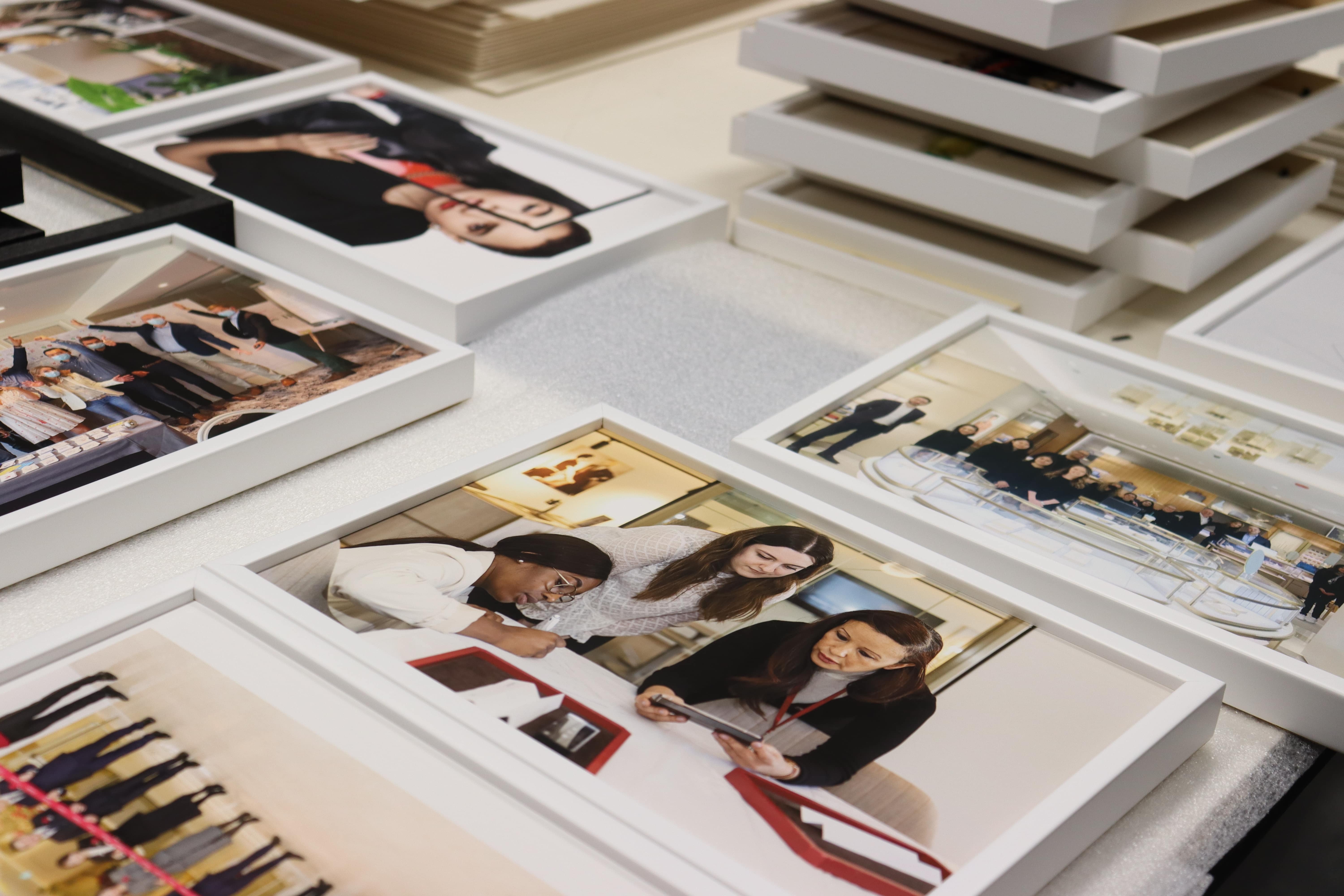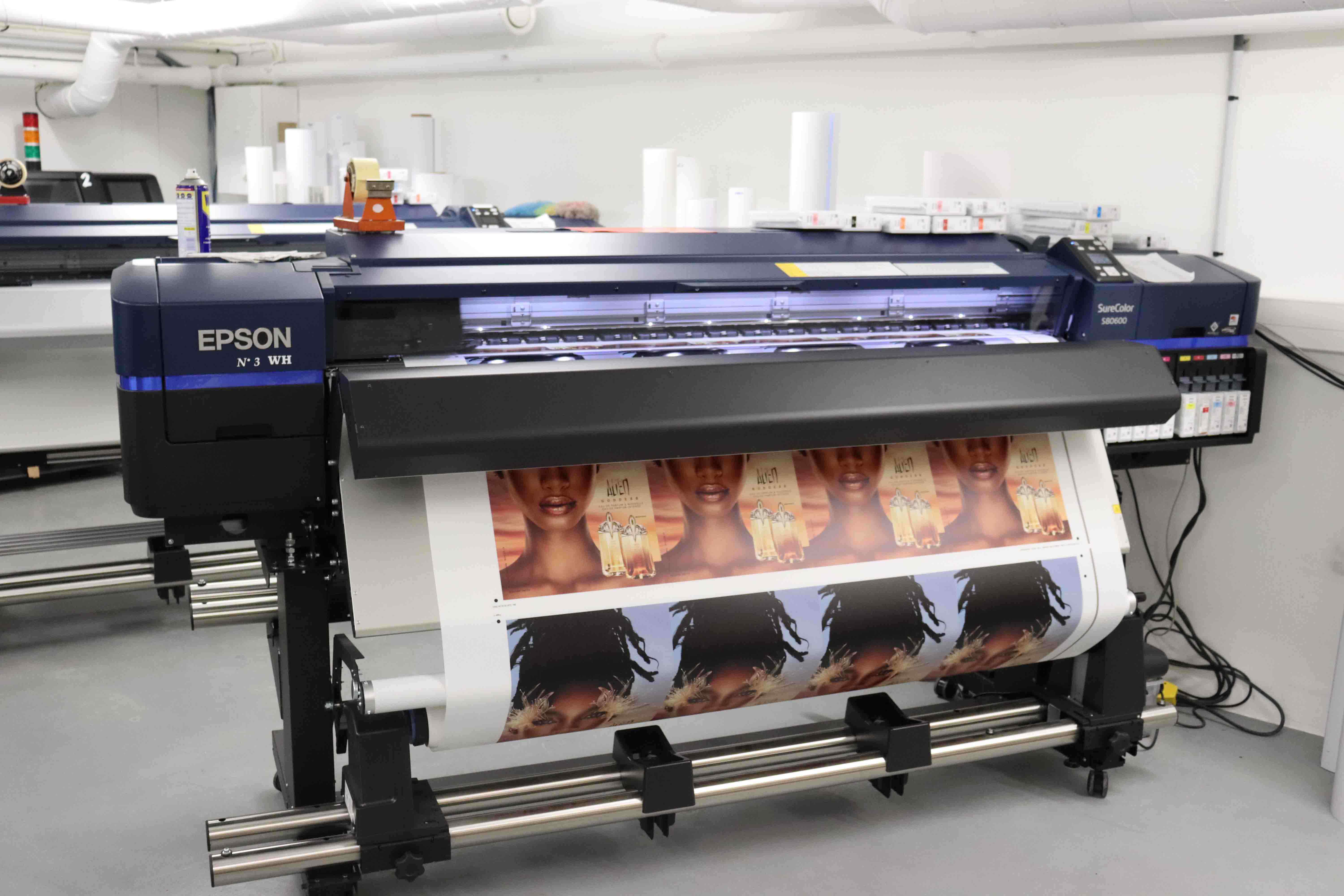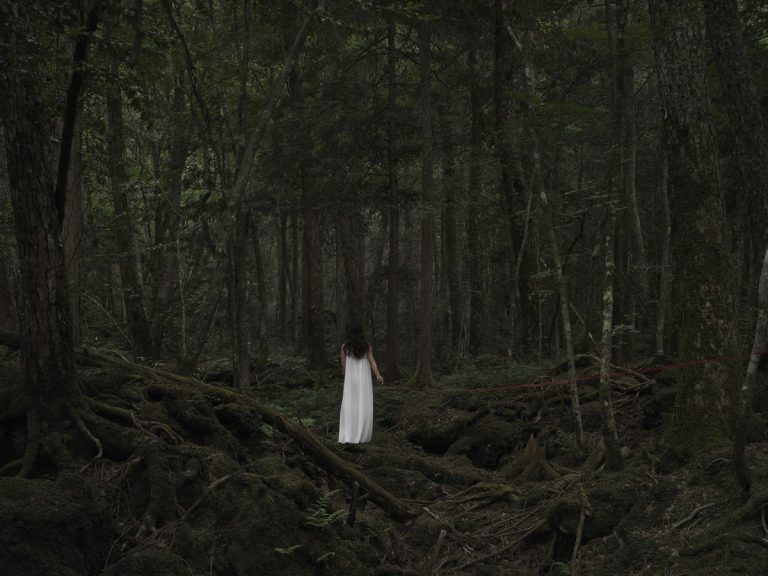Dupon, goldsmiths at the service of photographers
Since January, the Dupon laboratory is located at 15, avenue de Madrid in Neuilly sur Seine. A hive of 2,400 square meters of glass walls, spread over two floors where a slew of computers and printers at the cutting edge of technology hum.
These machines would be nothing but an empty shell without the know-how of the 56 employees who are at the helm. "It's not the machine that makes the print, but the eye of the experienced technicians. Florent Lepsch, the new general manager, knows what he is talking about. Before taking up this position, he worked in almost all the professions that make it possible to obtain a print from a negative or a digital file. "We tend to forget that we have to go through several manipulations, tests and adjustments, in order to obtain a rendering that is as faithful as possible to the one expected by the photographers. Here, they can come and discuss with the operators at each step of the process.
This has been a golden rule at Dupon since 1975. When Jean-Francois Camp founded the lab, the operators still wore white coats over their jeans, and the team had as many employees as deliverymen. "It was a race against time! We had to develop the images and get them to the newsroom as quickly as possible. We worked seven days a week, and 8 a.m. to midnight. Photographers could come in and supervise the coloring, ask for more exposure here, a little more makeup there. This complicity has always been in our DNA." Thus, Jean-François Camp saw Sarah Moon's debut, he followed Raymond Depardon's peregrinations, and Sebastão Salgado gave him his trust after having worked with several competitors.
In the mid-1980s, Dupon was the only laboratory that could produce prints measuring 1.80 m x 3 m. By its cinematographic dimension, the large format has always been one of my dadas," says the founder, "I quickly sensed the interest it would have with artists from luxury houses. He was not mistaken. Little by little, Yves Saint-Laurent, Dior, Chanel and Givenchy called on him to decorate their boutiques with huge photographs, unique pieces printed on a multitude of media according to technological advances.

With the year 2000, photography has made a digital turn, followed by a period of turmoil. In the space of two years, many laboratories went out of business. Dupon was able to reinvent itself by developing retouching and graphic design departments by equipping itself with machines that allow for the exposure of photosensitive papers with lasers and thus to produce "digital silver" prints. Pigment inkjet printers appeared, guaranteeing a long-lasting conservation, as well as high-resolution scanners to digitize the archives of foundations, museums or illustrious agencies such as Sipa, Cosmos or Magnum Photos. All this without abandoning the traditional black and white print, with an enlarger, which is the soul of Dupon.
This bastion of photography, Jean-François Camp has cherished it for nearly thirty-five years. "But there comes a time when you have to know how to hand over," he says. The founder then looked for a group capable of raising his company to the rank of European reference, while maintaining the spirit of openness and high standards dear to Dupon. His meeting with Cécile Dourmap, CEO of Phidap, a subsidiary of RC Group, was decisive. The takeover by the giant of point-of-sale advertising was finalized in March 2018. Cécile Dourmap, who relies on Pierre Moutet, recognized for his excellence in accompanying photographers, succeeds Jean François Camp. Other changes will follow, such as the move.
Leaving the old building overlooking Joseph-de-Maistre street, where the Dupon brigade had been working since 1981, caused some concern. Fears that were quickly swept away. At first glance, the Neuilly building may not have the charm of the old address in the 18th arrondissement, but it is much more spacious, bright and eminently comfortable," admits Jean-François Camp. And then, there are the same people. The heart of the reactor, as Florent Lepsch, the general manager, confirms. "This was the only place that allowed us to accommodate everyone in the same place. Elsewhere, we would have had to separate the teams. This was unthinkable, as Dupon is like a big family "where knowledge is passed on from one floor to the next.
In the Fine Art area, the shooter Jean-François Bessol-thirty years of home-is a young recruit. One floor below, programming experts supervise the four color and black-and-white processors, which are running at full speed, while the carpenters sand, cut and laminate. Here, we can do everything from A to Z, from printing to framing," says Florent Lepsch, "we don't want to be a two-speed company. The cosmetics sector represents 75% of our turnover and the photography sector 25%, but we want our technicians to treat with the same precision an advertising image for Louis Vuitton as a print for the La Gacilly photo festival. Since its beginnings, the laboratory has been a faithful partner of the major photography events: Visa pour l'Image, Portrait à Vichy, the Planète Albert Kahn, Pierre and Alexandra Boulat and Bayeux-Calvados prizes.

This support is repeated every year, and goes hand in hand with the attention paid to the next generation of artists. While Dupon continues to work with the greatest names of the 20th century, new ones have joined the faithful. Among them, the portraitist Frédéric Stucin and the artists Pierre Elie de Pibrac and Sophie Zénon. Not forgetting Yves Marchand and Romain Meffre, known for immortalizing industrial ruins with a camera. When Dupon packed up, the duo had carte blanche to capture the soul of the old premises, empty and bare. These images, witness of the past are now exposed on the new walls of the lab. Is there a touch of nostalgia in the air? Not at all," says Florent Lepsch. It's more of a symbol, a way of telling people that we have taken our history and our know-how with us.

Pierre Elie de Pibrac, in the Hakanai Sonzai series